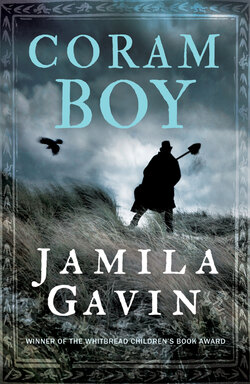Читать книгу Coram Boy - Jamila Gavin - Страница 6
Foreword
ОглавлениеIt was a passing remark which triggered the story – as is so often the way with writers. A friend murmured something about ‘the Coram man’ in the eighteenth century: someone who collected abandoned children, ostensibly to deliver them to the newly founded Coram Hospital for the Maintenance and Education of Exposed and Deserted Children. But the Hospital had never employed such a man, and any so-called Coram man was acting on his own, and most likely in his own interests without any regard for either the abandoned children or the miserable women who had entrusted their pathetic offspring into his safe-keeping. Indeed, the highways and by-ways of England were littered with the bones of little children. Children in the eighteenth century were routinely brutalised, whether it was at home or at Eton College, whether it was in the parish orphanages, which were no more than dying houses, or in the cathedral choir schools. It was often entirely a matter of luck if a child was kindly and lovingly reared, and it was to redress this that Captain Thomas Coram opened his hospital in 1741. It was people like him who gradually changed the whole perception of child care and who touched the conscience of the nation.
When I heard this, it was as if my brain became a stage. The story seemed to have been there all along, and my characters made their appearances fully formed and demanding my attention. I think I have loved these characters almost more than any I have ever created, and I still find myself grieving for those who were not so lucky as the Coram boy.
Once I let it be known that I was writing a book set in the eighteenth century, so many friends and acquaintances fed me with historical facts and details, some trivial, some important – but all of which were of invaluable help to me as I tried to immerse myself in the period. I must thank Peter Patten from whom, over fifteen years ago, I actually first heard the name Coram and who sowed the first seed of the story; Robert Eagle, who thought there was a terrific story to be told; Vivien Richmond, Marlyn Leese, Robin Lunn, Rajan Chet Singh and John Irving, who went beyond the call of friendship in providing me with information and inspiration; Lowinger Madison, librarian at Gloucester Cathedral; and Jenny Uglow, for her encouragement and for taking the precious time off to read the manuscript. Most of all, I must thank my editors: Miriam Hodgson, who never wavered in her patient support through all the doubts and fears as I trod new ground, and Cally Poplak who, with her meticulous eye and rigorous attention to detail, constantly kept me on my mettle.
The Coram Foundation exists today in Coram Fields. A manuscript of the Messiah is held in their archives (the Messiah was performed at the hospital in May, but for the purpose of my story I have moved it to December) and the portrait by Hogarth of Sir Thomas Coram still hangs there. The foundation’s work on behalf of children goes on.
The following books were of invaluable help to me in my research: Coram’s Children by Ruth McClure, Hogarth by Jenny Uglow, A History of England in the Eighteenth Century by Roy Porter and The Singing Game by Iona and Peter Opie, from which I adapted a number of rhymes.
Jamila Gavin
September 2000
